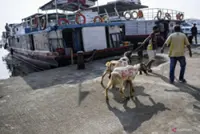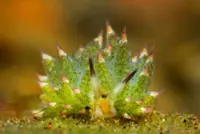Knut, the first polar bear cub to survive past infancy at the Berlin Zoo in more than 30 years. His early death caused dismay far beyond the city. Photo: Soeren Stache/dpa-Zentralbild/dpa
Two years ago, everyone in the city of Erfurt was thrilled when rhinoceros Marcita gave birth to a little bull.
The zoo was particularly excited and set up a poll so the public could vote on a name for Marcita's second cub.
Already a subscriber? Log in
Save 30% OFF The Star Digital Access
Cancel anytime. Ad-free. Unlimited access with perks.





